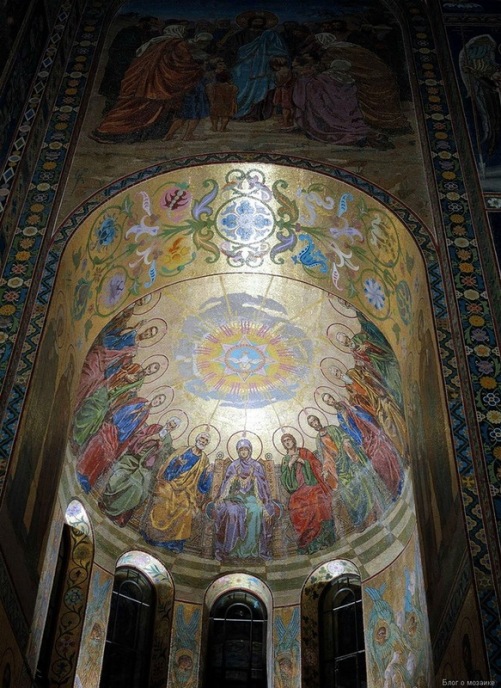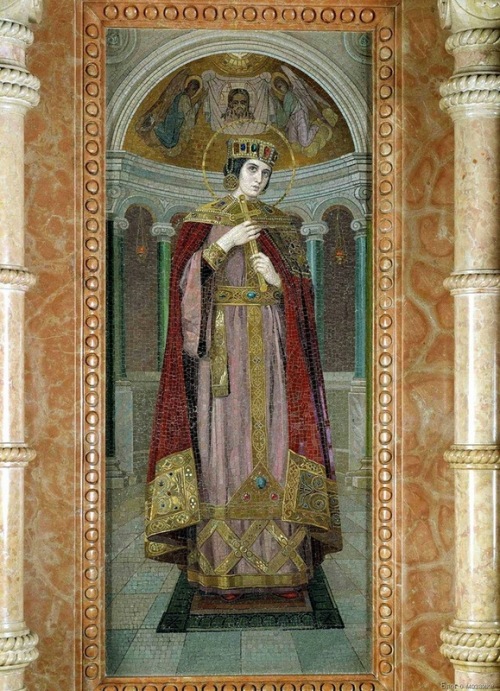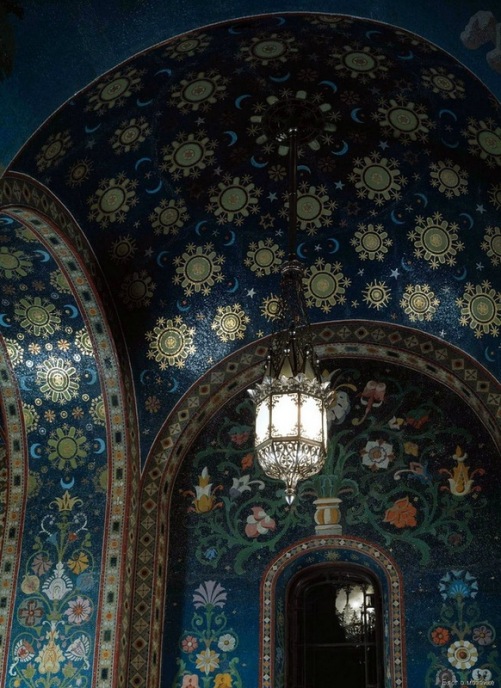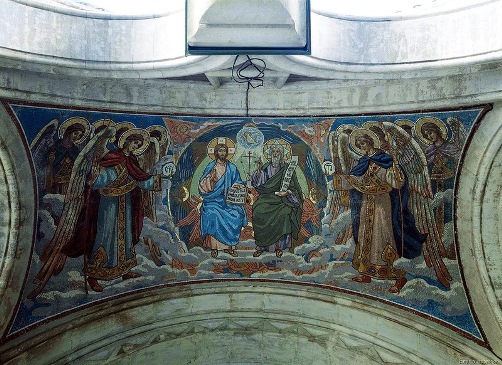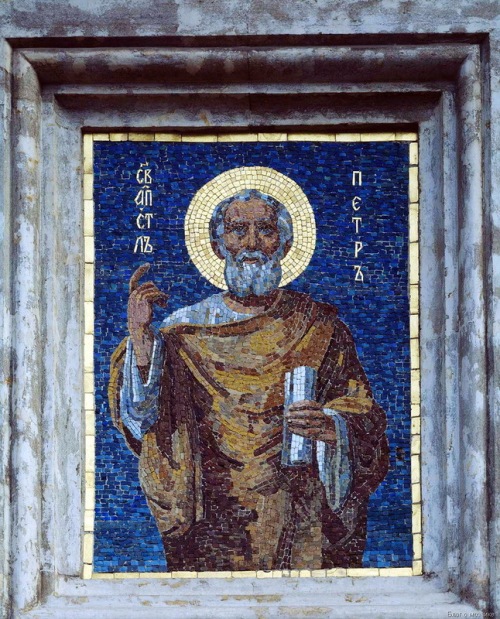Mosaics in Church of the Savior on Blood
Mosaics in Church of the Savior on Blood
Built on the site where Tsar Alexander II was assassinated, the Church was dedicated in his memory. Interior of the church – beautiful collection of mosaics. in fact, the Cathedral of Our Savior on Spilled Blood in St. Petersburg is one of the largest in Europe. Mosaics cover more than 7 thousand square meters of the temple, and the manufacture of these masterpieces has taken ten years. Among manufacturers of the mosaics were famous Russian masters – Vasnetsov, Nesterov, Belyaev, Kharlamov, Zhuravlev and Ryabushkin. The Temple was originally built as electric, and had 1689 light bulbs. Mosaics in this light should look special. Besides technical innovations – electricity in the temple were others, for example, in its colorful cupolas were artfully mounted lightning rod system corrector.
The Church of the Resurrection of Christ is a superb example of Russian architecture and monumental and decorative art of the end of the 19th century. The church was built on the spot where Alexander II was fatally wounded by the People’s Will revolutionary Ignaty Grinevitsky on 1st March 1881, an event which gave the cathedral its second, more commonly used, name – “the Savior on the Blood” (often referred to by Russian name, “Spas na Krovi”).
In the evening of 1st March, a wooden fence was erected on the embankment of the Yekaterininsky Canal at the site of that day’s tragedy, and a sentry was posted.
On the 2nd March, an extraordinary sitting of the city duma (council) petitioned Alexander III “to permit the city’s public administration to erect… a chapel or memorial at the expense of the city”. The Emperor replied: “It would be desirable to have not a chapel, but a church.” Nevertheless, an interim decision was taken to build a chapel. By April the building was complete. Designed by architect Leonty Benois, it cost the duma almost nothing: construction work was carried out by Ilya Gromov, a merchant of the first guild, and paid for by the merchant L.F. Militsyn, who became churchwarden.
The chapel was the site of a daily requiem for Alexander II. Almost immediately after the tragedy, the city duma set up a commission for the perpetuation of the memory of Alexander II. Similar commissions were set up all over Russia. The scale of public mourning can be judged from the report of the Technical Committee of the Ministry of Home Affairs for 1888: monuments to Alexander II were erected in the Moscow Kremlin, in Kazan, Samara, Astrakhan, Pskov, Ufa, Kishinev, Tobolsk and St. Petersburg: busts were set up in Vyshny Volchok, and in villages in the provinces of Vyatka, Orenburg and Tomsk.
On 27th April, 1881, the St. Petersburg city duma published in the press conditions of entry for a competition to build a memorial church. On 23rd March 1882, the competition projects were shown to Alexander III in his palace at Gatchina, but not one received His Majesty’s approval. The Emperor expressed the desire that the church be in the style of Russian churches of the 16th and 17th centuries. It was only natural that this desire should become an obligatory condition in the second round of the competition.
Mosaics in Church of the Savior on Blood
www.sacred-destinations.com














